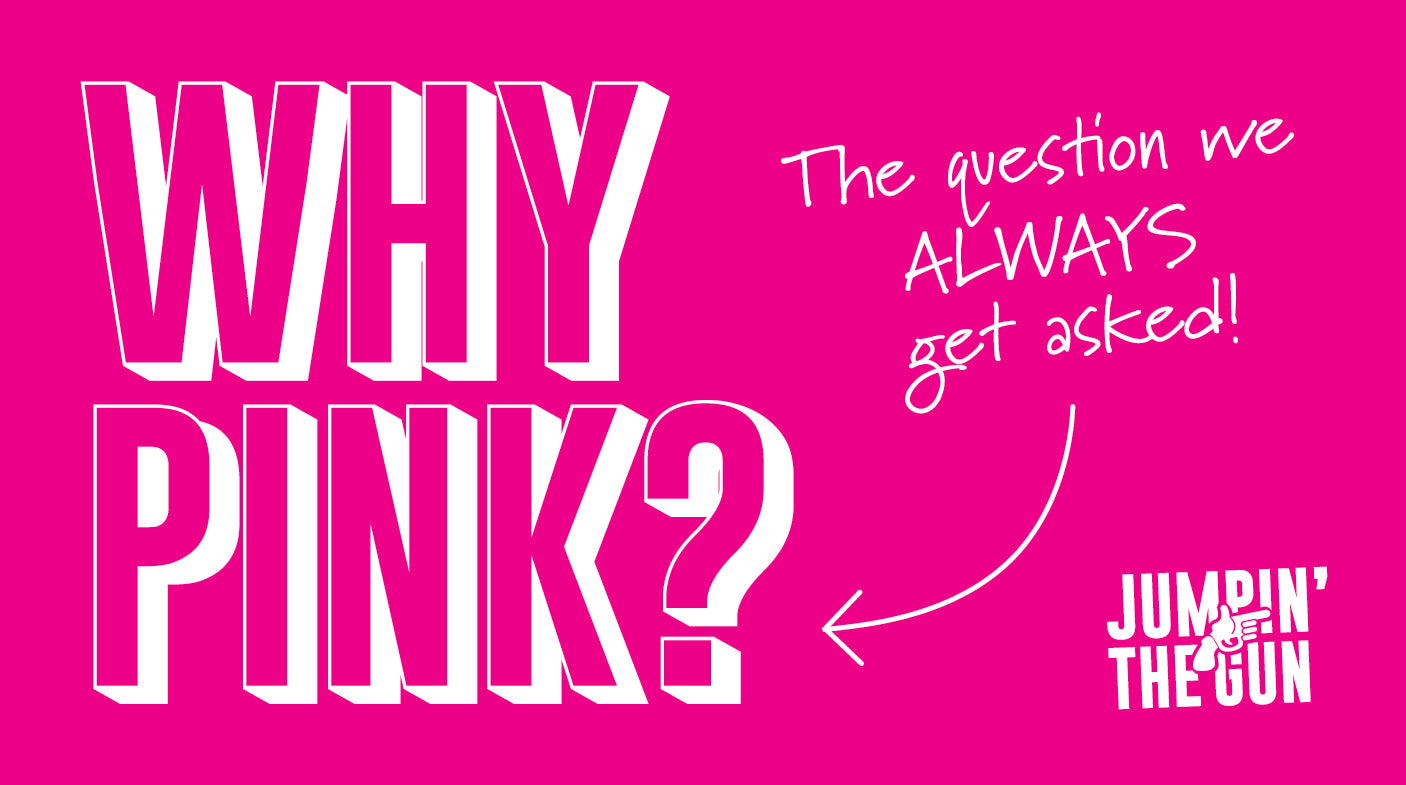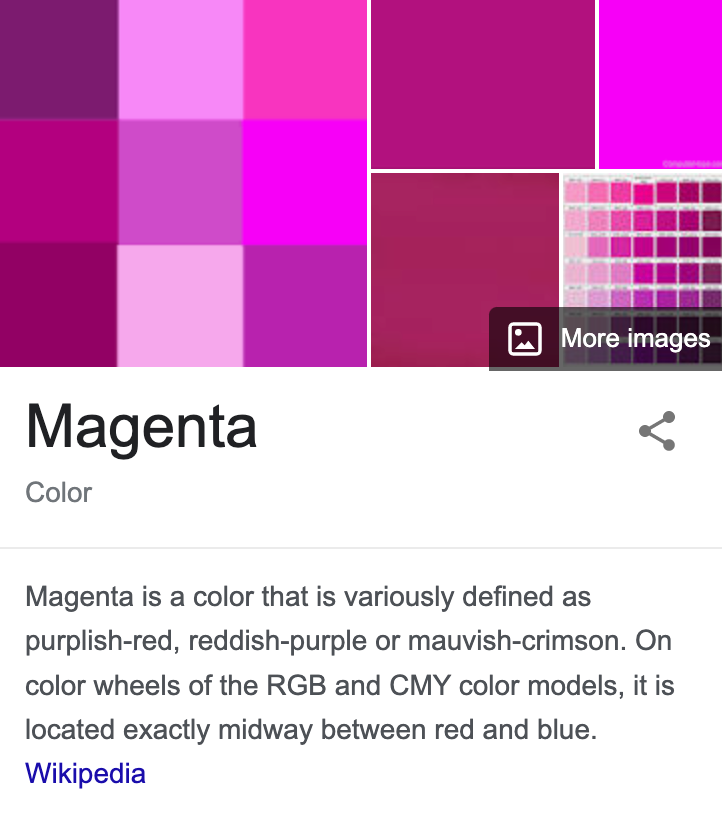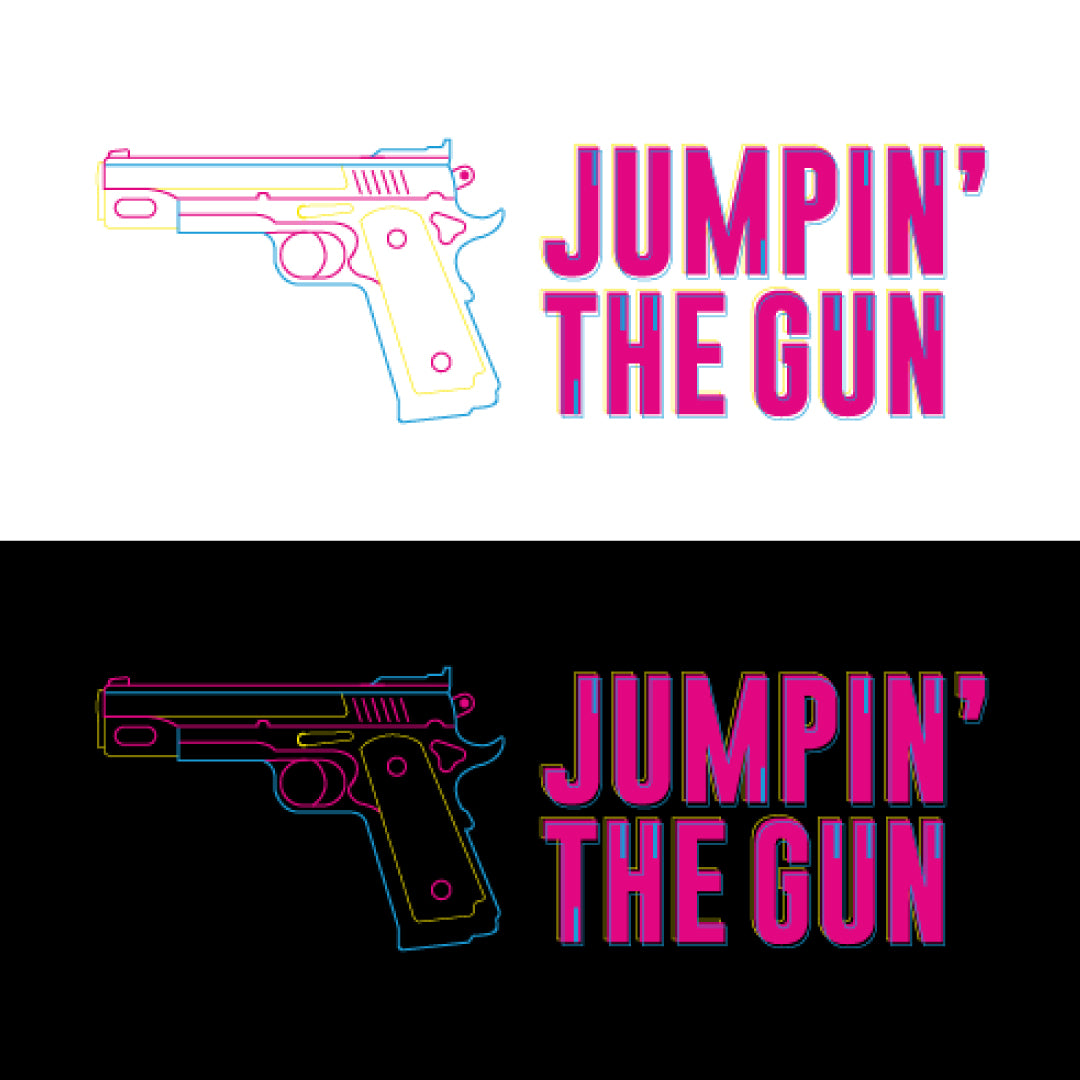How the JTG philosophy was inspired by the history of the printing colour magenta.
We wear our brand colour like a badge of honour and too often we get asked... WHY PINK?! Well, you know this iconic colour because of so many ICONS... Barbie, Pink Panther, Legally Blonde (click the pink bag), Marilyn Monroe, Mean Girls, Hello Kitty, the Naked Gun, Samantha Jones, Lyft, LG, Roxy, InDesign, Paris Hilton, Premier League, Lady Gaga and of course Jumpin' the Gun!
We see pink as the colour behind creative interpretations that left impressions that were made to last. Our shade of pink is probably closest to what is most commonly known as Vivid Cerise, which is primarily a colour from the red colour family and is a mixture of magenta + pink. As such, the particular hue of this colour is technically magenta-pink or magenta-red, and the intensity is definitely vibrant.
However, the JTG Pink isn't EXACTLY Vivid Cherise, so it could also be referred to by names such as Deep Cerise AKA Hollywood Cerise, Fashion Fuchsia, Deep Pink, Red Violet, and our personal favourite ... Hot Pink!
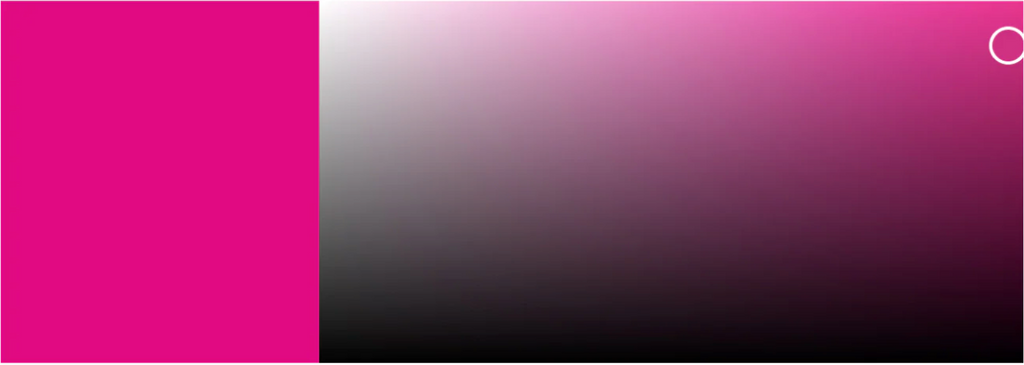
So, to boil it right down, we have essentially classified our JTG shade of pink as magenta in the print colours, as well as the colour spectrum. We're sure you recognise magenta — it’s that colour that’s a mix between purple and red. It’s sort of pinkish-purple, and looks something like the pic above! Oh, and completely imaginary! AKA it's not a real colour out there in the world at all - your brain is full-on making it up. How so?
Here's the deal. On the spectrum of light, violet and red are on opposite ends, with yellow, green, blue, orange, etc. in-between. The colour magenta is our brain’s solution to a mixture of both red and violet light - inventing a completely new and entirely imaginary spectrum of magenta light all to explain the colour between red and violet!
So if it doesn’t exist, why can we see it? Isn't it literally your logo colour right now? This is where things get really interesting…
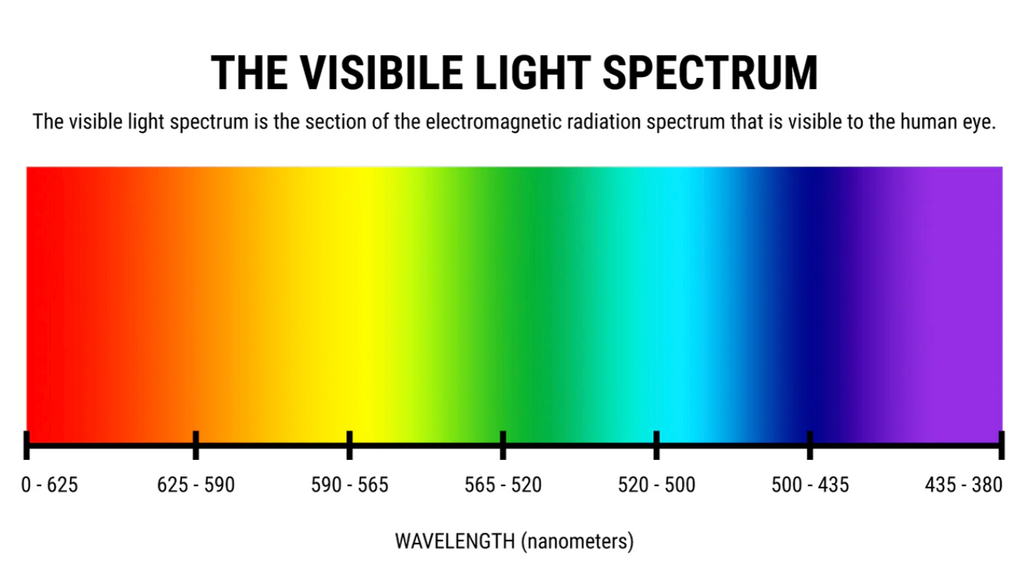
SOME FACTS ABOUT THE HISTORY OF PINK:
- The colour pink was recognized as a concept in 800 B.C. in Homer’s Odyssey.
- The term was coined in the 17th century by a Greek botanist for the ruffled edges of carnations (flowers called pinks, members of the genus Dianthus).
- Madame de Pompadour, one of Louis XV’s lovers, liked the hue so much that the Sèvres porcelain company created and named a specific pink shade for her.
- The colour fuchsia was first introduced as the colour of a new aniline dye called fuchsine, patented in 1859 by the French chemist François-Emmanuel Verguin. The dye was renamed magenta later in the same year, to celebrate a victory of the French army at the Battle of Magenta on June 4, 1859, near the Italian city of that name.
- In the mid-18th century, pink was a fashionable colour among aristocrats symbolising class and luxury.
- In the mid-20th century, men started to wear darker colours to reflect their World War II service. Bright and pastel colours like pink were rebranded as feminine as part of a post-war effort to remove women from the workforce and re-establish their traditional homemaker roles.
- Former first lady Mamie Eisenhower loved the colour pink and had pink decor throughout the White House. When Mamie Eisenhower wore a pink dress as her inaugural gown at the US presidential inauguration of Dwight D. Eisenhower in 1953, it was thought to have been a key turning point in the association of pink as a ‘girl’s colour’. However, Mamie's strong liking of pink led to the public association of pink being a colour that "ladylike women wear."
- Elvis Presley had a pink 1955 Cadillac.
- The colour name cerise has been in use for this colour since 1993 by Crayola.
- Since the 1990s, pink has become more gender-neutral in Western culture.
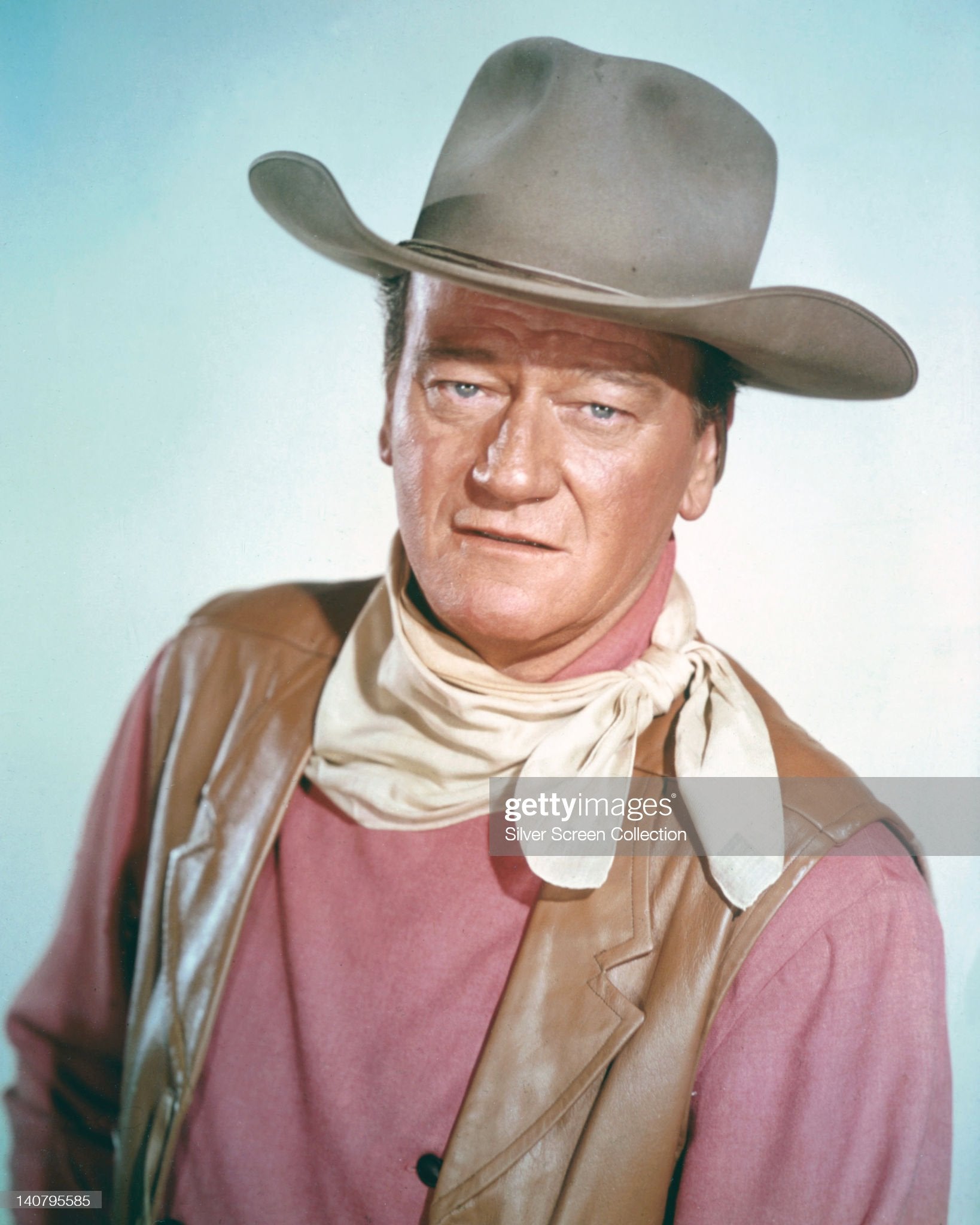 John Wayne - man not afraid of a pink shirt. Silver Screen Collection Getty Images © Studio portrait, against light blue background circa 1970.
John Wayne - man not afraid of a pink shirt. Silver Screen Collection Getty Images © Studio portrait, against light blue background circa 1970.
MEANING OF THE COLOUR PINK
Meanings & symbolism of pink have changed over years. In art, pink was used for Jesus due to its association with the womb & innocence as a virtue. Roman goddess Venus, associated with intimacy & love, was painted in pink. Today, pink is often the colour of awareness & activism for specific causes, including breast cancer, women’s rights, LGBTQ+ community etc.
PSYCHOLOGY OF THE COLOUR PINK
As the mix between red’s passion and white’s purity, pink symbolises love, nurturing, and compassion. It evokes feelings of comfort, warmth, and hope. It symbolises success in the expression “everything is rosy” and happiness with “tickled pink.” Some studies suggest that pink environments stimulate calmness, so it is often used in prisons and hospitals.
Now, if you skim-read through all of that and didn’t really get what we were playing at, here’s the short and sweet WHY. All the buzz words found in this article to describe or explain the colour pink is how we choose to describe our work and work culture - vibrant, warm, loving, happy, compassionate, hopeful, successful, energetic, proactive, bold, rebellious... etc.
And this, good people, is why chose pink. Now you know!

